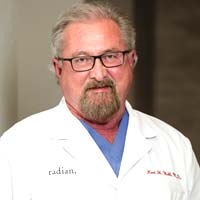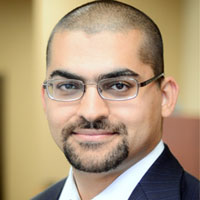Robots Make Hair Transplant Surgery Easier
Hair restoration surgeons across the world are raving about
the new hire in many of their offices that's making hair transplant surgeries
easier and better.
The new hire isn't another doctor, but its skill level and
accuracy are commendable. Robots have taken a center role in hair transplant
surgery for their ability to deliver permanent, natural looking hair
transplants in less time.
Specifically, the ARTAS Robotic System is used by surgeons
to help patients with hair loss by performing FUE - which hair follicles are
harvested and then relocated to the problem areas on a patient's scalp with
minimal scarring.
Compared to a manual procedure, the robot can quickly
extract hair in a minimally invasive way. And there are no stitches or staples
needed.
Dr. Robert Leonard and Dr. Matthew Lopresti of Leonard
Hair Transplant Associates and serving the New England area, are touting
the benefits of using robots for hair restoration.
Dr. Leonard, the founder and chief surgeon of Leonard Hair
Transplant Associates recently blogged about the topic and highlighted the benefits
of using robotic surgery for hair restoration.
He noted that, "With ARTAS... We actually move
individual grafts, which are then transplanted to the top of the head, so
there's no linear scar that might be evident if a person were to wear his hair really
short."
Many implementations of robotic procedures in the medical
setting have taken off and become the go-to method for surgeons. In fact, a
report from bcc Research forecasts that the global market for medical robotics
and computer-assisted surgical equipment will hit $3.6 billion by 2016.
Hairfear - 3-31-2015
Frequently asked questions about hair transplant procedures
How much does a hair transplant cost?
Hair transplants can vary in price based off of the area in the world that you are interested in getting a hair transplant as well as the size of the area where you may need a hair transplant. Experienced doctors in the United States will often charge some of the highest prices for a hair transplant worldwide and this is why so many travelers make the move to other parts the world like Turkey, India, Thailand, Mexico...etc for their hair transplants.
Will a hair transplant hurt?
Although hair transplants may look like a particularly
unpleasant or painful experience is actually very little discomfort involved
with the surgery itself. Hair transplants are always done under an anesthetic so there's absolutely zero pain during the treatment itself. Many people actually relate the process as being very similar to going to the dentist for filling or root canal. Mild pain can persist over the course of postop treatment but he generally just resumes for a few days.
Who can deliver the best surgery?
It's usually best to consider working with surgeons who have and IAHRS certification or international alliance of hair restoration surgeons recognition. IAHRS can often deliver recommendations for the best surgeons in each particular area.
Is this scarring noticeable?
Any type of hair transplant will require the use of incisions throughout the scalp. There can also sometimes be a small scar from the donor area towards the back of the scalp. Asking to look at photos of the surgeon's previous work will help you to see roughly how bad the scarring could be. In most cases an experienced professional can limit the look of scarring and noticeable marks from the surgery.
How long does it take for the hair to grow?
In most cases hair growth will start within eight months and you can start to see a full effect from the hair transplant after a full year. The initial signs of growth can usually start between 3 to 4 months after the surgery.
Are the results permanent?
The hair follicles that are transplanted are generally the ones which are genetically resistant against the symptoms of baldness. As long as you receive hair loss treatment later in your life after the symptoms of balding have started to subside, you can have a better chance at permanent results.
While everyone know you've had surgery?
If you want to limit the chance that people may find out about your surgery it's important to give at least three weeks of healing as the surgical area will be affected and red just after surgery. After around a month of healing it can look far less noticeable. You could consider wearing a hat while time passes or opting for some extra time off if possible.
How long should I rest after surgery?
It's recommended to rest for at least a few days after surgery so that your body can recover. Trenton to over exert yourself and limit sexual activity, running in the gym for around 10 days after surgery.
Is it possible to lose more hair as a result of surgery?
There is always a chance of shock loss which happens when the hair is weak and miniaturizing after the surgery. As long as the surgeon is choosing the correct hair follicles and performing the surgery well it's possible to minimize the chance of this happening however.
Will I need another hair transplant?
The need for another transplant really depends on the individual. With a solid foundation surgery and working to potentially bolster results with drug therapy, you can improve the stability of the hair that was transplanted as well as prevent further loss. Getting a hair transplant early
on in your 20s or early on in life could lead to needing long-term transplants as hair loss can be progressive.







